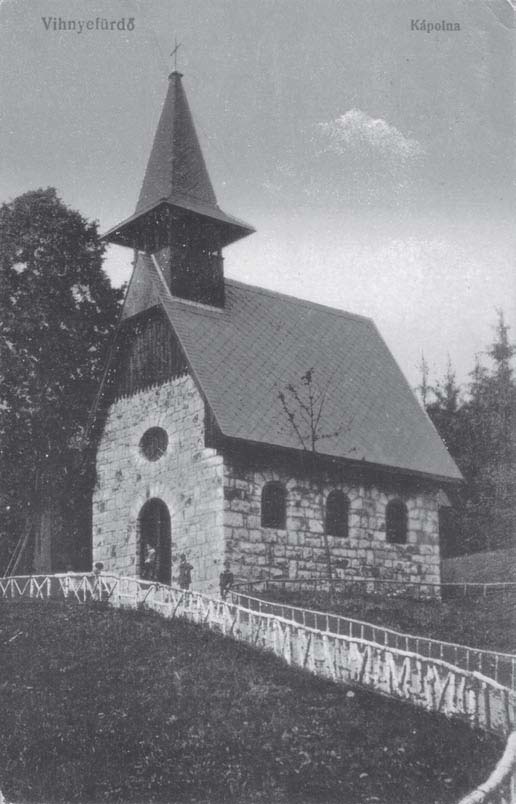The forested surroundings of the tiny spa town of Vyhne hide among themselves a small, almost unassuming chapel, constructed shortly before the outbreak of World War One and its ensuing seismic changes in the fates of so many individuals, nations and political entities. The chapel was the first completed architectural work of its designer, the architect Ladislav Hudec (1883 – 1958), a native of Banská Bystrica, whose own life was shifted onto a quite unusual course by the outbreak of war. As a result of the hostilities, he ended up as one of the key figures of Chinese architecture, settling in Shanghai where he achieved a position as one of the era’s most sought-after architects. Hudec’s initial work, in the form of the chapel in Vyhne, is already indicative of the skills of the youthful architect who was later to reach full development far from his native land. Here, we can see his ability to work with references to the history and symbolic context of architectonic forms, even as the most immediate point of reaction were the early modernist tendencies then current in late-Hapsburg Austro-Hungary. One of the very oldest mineral baths in Slovakia, the Vyhne spa was the property of the town of Banská Štiavnica from as early as 1564; the town also held ecclesiastical patronage over the town’s main church as well as the spa chapel. In 1734, the Banská Štiavnica town hall commissioned the construction of a chapel consecrated to St. John of Nepomuk, though this structure was demolished in May of 1896 as part of the expansion of the baths themselves. A special fund was created for the construction of a new chapel, to which end a series of social fund-raisers, particularly charitable public concerts, was organised. Nonetheless, the collection of finances for the chapel proceeded very slowly. While still a student at the Technical University in Budapest, Ladislav Hudec prepared a design for the chapel in 1913. This design was accepted for construction by the town hall in Banská Štiavnica, under the administration of chief alderman Kálmán Horváth, and realised in the autumn of the same year by the construction firm of the architect’s father, Hugyecz & Rosenauer, for the cost of 8,000 Austro-Hungarian crowns….

This work is licensed under a Creative Commons Attribution 4.0 International License
